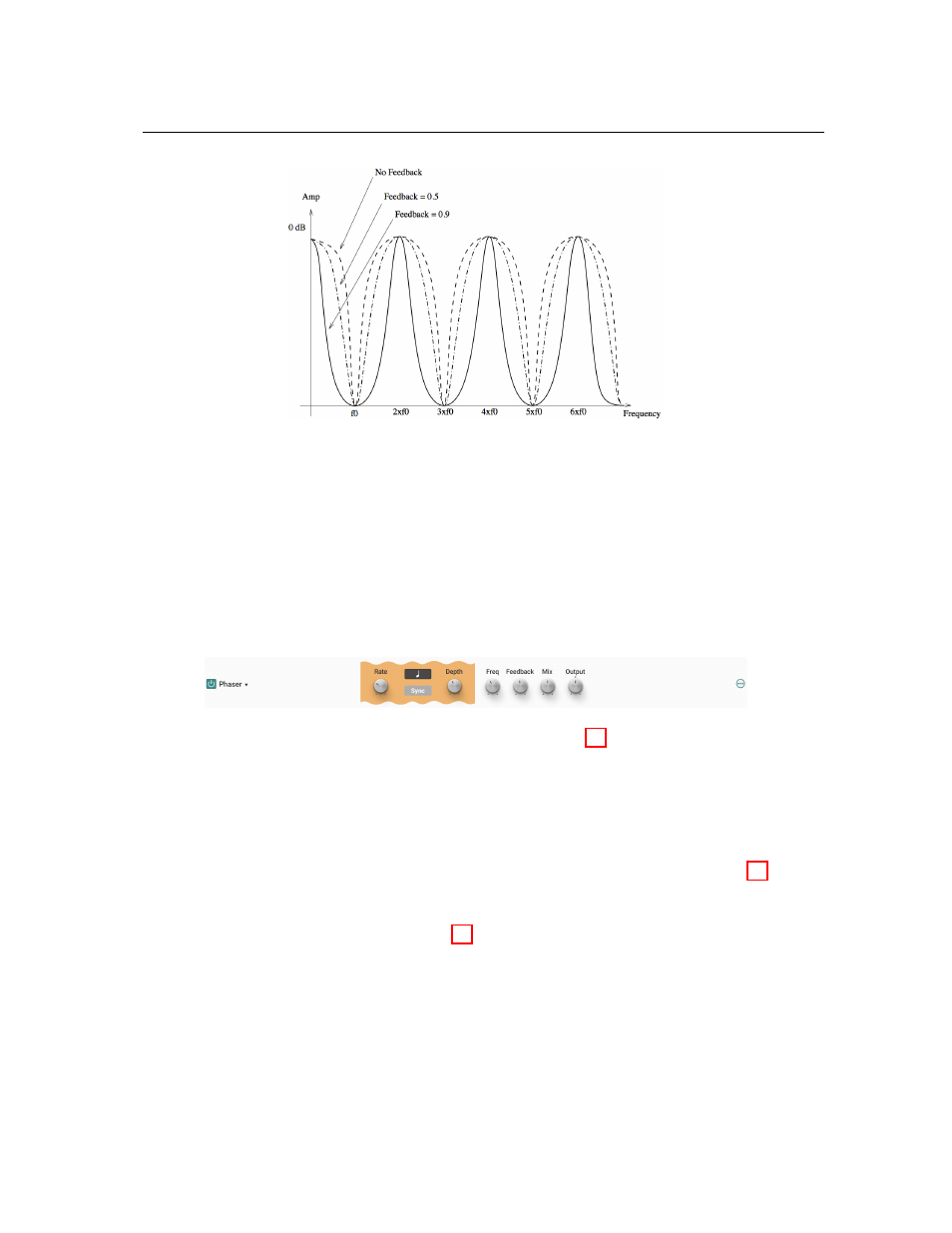Phaser – Applied Acoustics Systems Chromaphone 3 Upgrade Acoustic Object Synthesizer Plug-In (Download) User Manual
Page 57

5.4
The Effects Section
57
Figure 32: Effect of the amount of feedback on the frequency response of a
Flanger
module.
sent to the output.
5.4.7
Phaser
The
Phaser
module implements the effect known as
phasing
which colors a signal by removing
frequency bands from its spectrum. The effect is obtained by changing the phase of the frequency
components of a signal using an all-pass filter and adding this new signal to the original one.
The algorithm implemented in this module is shown in Figure 33. The input signal is sent into a
variable all-pass filter. This wet signal is then mixed down with the original dry signal. A feedback
line allows the resulting signal to be re-injected into the filter. The effect of the
Phaser
module is
to introduce rejection in the spectrum of the input signal depending on the tuning of the filter.
The all-pass filter modifies a signal by delaying its frequency components with a delay which
increases with the frequency. This phase variations will introduce a certain amount of cancellation
when this wet signal is mixed down with the original dry signal as shown in Figure 34. The
rejection is maximum when the phase delay is equal to 180 degrees and a given component is out
of phase with that of the original signal. The amount of effect is determined by the ratio of wet and
dry signal mixed together as shown in Figure 34. As the amount of wet signal sent to the output is
reduced, the amount of rejection increases. The shape of the frequency of the Phaser module is also
influenced by the amount of wet signal re-injected into the feedback loop. Increasing the feedback
enhances frequency components least affected by the all-pass filter. As the feedback is increased,
these peaks become sharper. The functioning of the
Phaser
is very similar to that of the
Flanger
module. The filtering effect is different however, since the
Phaser
module only introduces rejection
around a limited number of frequencies which, in addition, are not in an harmonic relationship.
